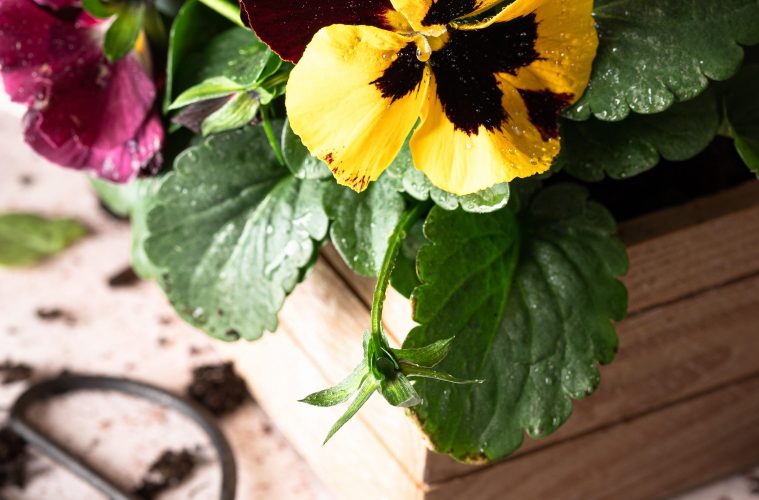There is nothing that will lift the spirits more than bright and bold edible flowers added to your salads, snacks and desserts. The saying: “you eat with your eyes first” is easily accomplished by using edible flowers on your food plates and platters. You can grow these few edible flowers now for a tasty and elegant garnish through winter.
Winter edible flowers in the garden and kitchen
Pansies and violas
Pansies are one of the most used edible flowers, coming in a broad array of colour and bicolors. Paint their bold faces with egg white and dip into caster sugar for a pretty addition to cakes and ice creams. Add to salads and use as is on cupcakes for kids (and adults). Delicate violas are perfect as décor for desserts and cakes. Pansies and violas last for months planted in containers and in the garden, so there is always a good supply of flowers to use.
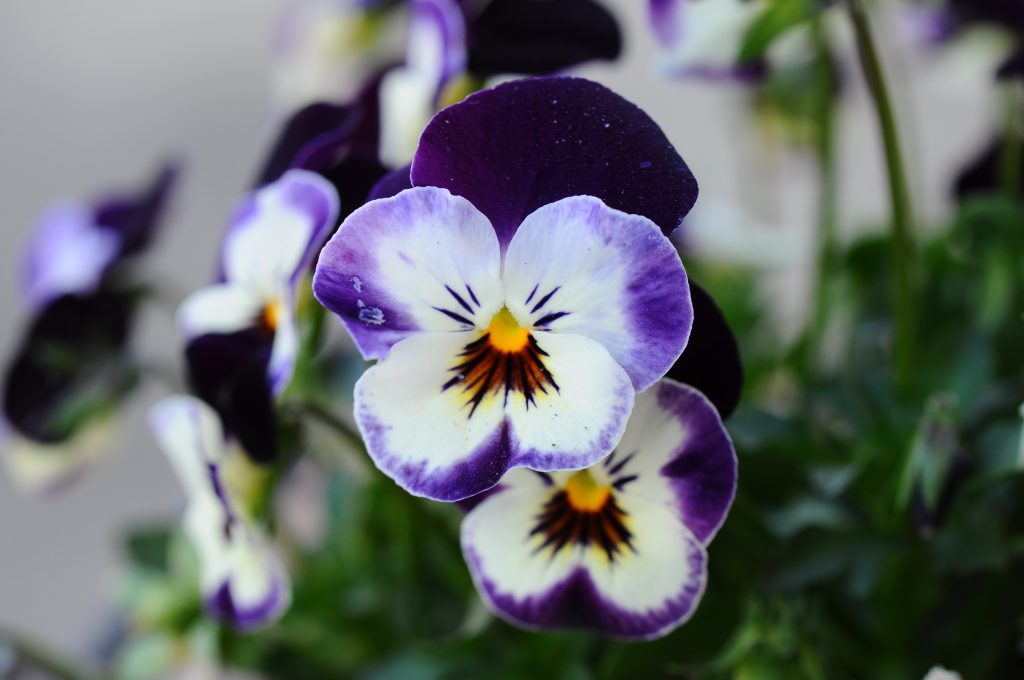
Calendula
The bright orange flowers of calendula officinalis are a must for any sunny winter garden. The petals are used extensively for their anti-fungal and anti-inflammatory components, especially in skin care creams and in teas. The petals are used, with the bitter white base of the petals discarded when added to salads and soups. They grow well in any soil in pots and in the garden and require deadheading to encourage more blooms.
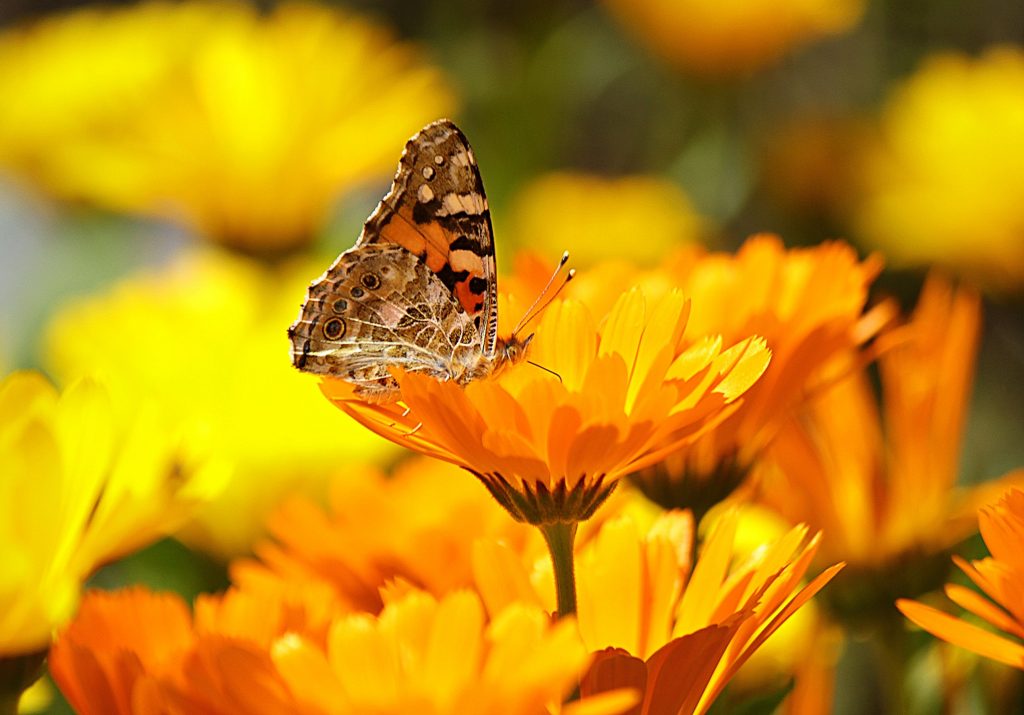
Lavender
Lavender is well known for its use in cooking and baking, especially for biscuits, cakes and desserts. It also makes a fragrant tea that has many health benefits, including as a calming tonic. Some varieties will flower throughout the year, growing well in full sun in well-draining soil. The edible flowers have a milder taste than the leaves, but they delight the senses with their pretty purple colour.
English daisies
Bellis perennis flowers have a pleasant tart taste, added to a salad, sandwich or cooked dish or used to flavour vinegars. The buds of these flowers can be pickled in vinegar and used as a substitute for capers. The name Bellis perennis means ‘beautiful perennial’ and in our warmer climate, they fill a winter and spring garden with colourful blooms. They grow in full sun and semi shade and do well in pots.
Borage
Out of the flowering herbs, borage has the prettiest edible flowers in a bright lilac colour, popular for using in cocktails, to decorate cakes and biscuits fresh or candied, or added to ice cubes to spice up a lemonade. These bee magnets are great companions to other plants in the garden to repel pests and diseases and they self-seed so once you have them in the garden, they are yours forever. A useful herb in the garden that is also used for its many medicinal properties.
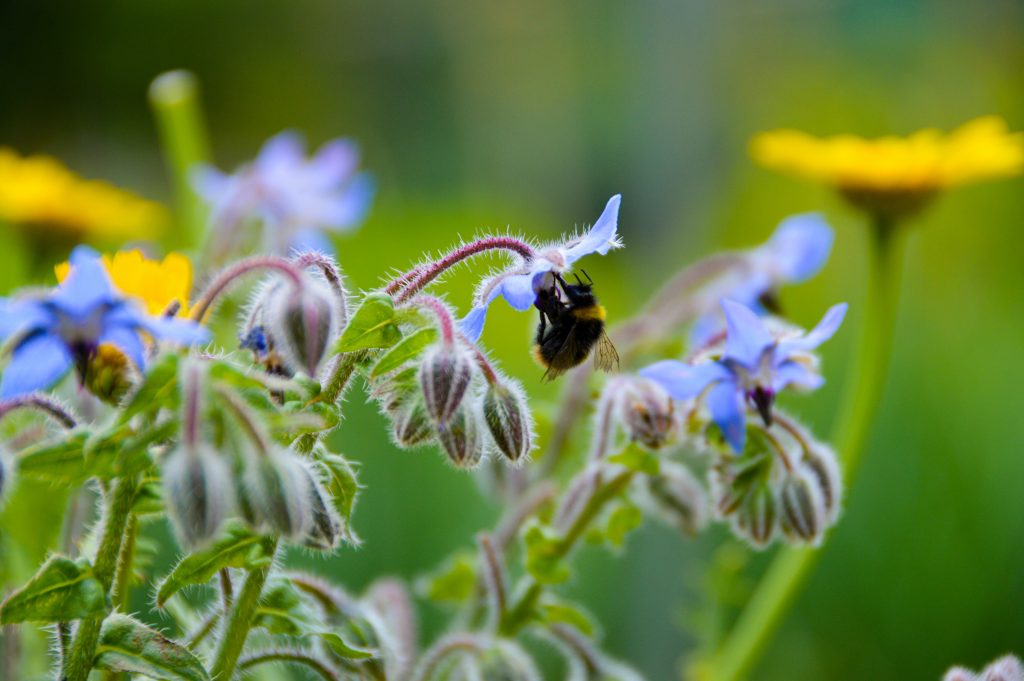
Rocket
While the leaves of rocket are the most used in salads and pestos, the edible flowers are a beautiful cream colour that add a little peppery bite to dishes. A few can also be left on the plant so that they can go to seed for the next crop of plants. Plant as a companion plant in the veggie garden to repel pests and as a snack for your next sandwich. They like good soil and plenty of water, but also good drainage and a dose of liquid fertiliser once a month.
Chamomile
Known for its use as a tea, chamomile can relieve stress, anxiety and helps with digestive problems. Infused into oils it can make a great salad dressing and the flowers can be added to anything to brighten up the plate. Try adding to mayonnaise to serve with fish. Chamomile prefers cool conditions and partial shade. Also don’t fuss over it – a bit of neglect will go a long way.
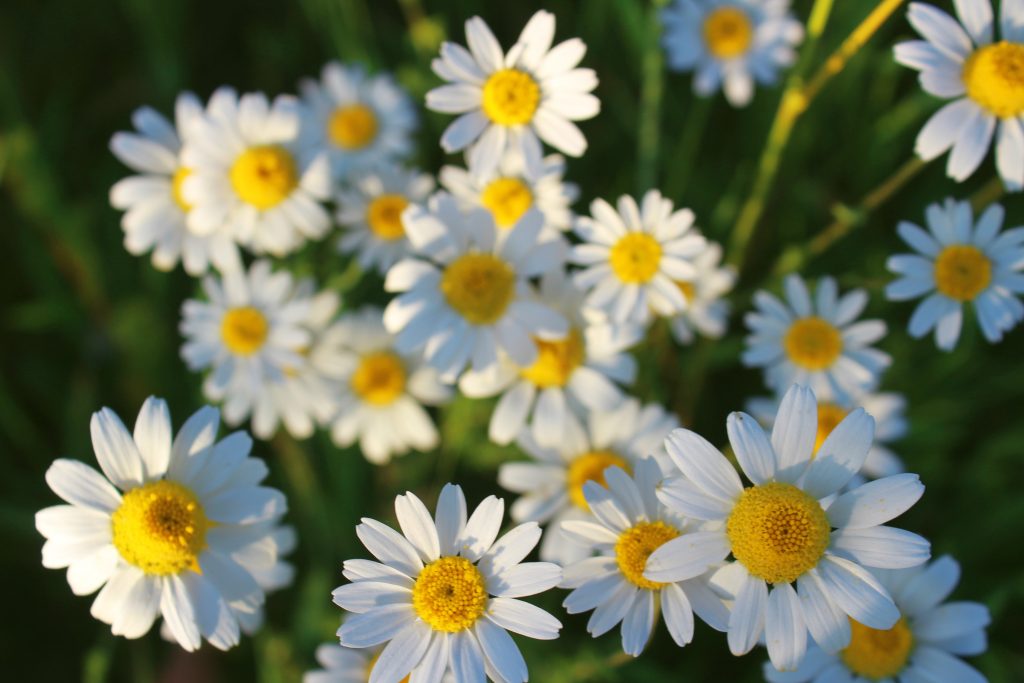
Roses
Not usually on a winter flower list, roses are one of the most popular edible flowers. There are some roses that will flower well into autumn and there also few winter roses that love the cold. Rose flowers are often used in decorations for cakes, especially those that want fresh flowers on wedding cakes. The petals are used extensively in the kitchen to flavour desserts and cocktails, soups and teas. In Middle Eastern and Indian cuisine, rose petal extract is often used to flavour sweets. Paint the petals with egg white and dip in caster sugar for a pretty biscuit and cupcake decoration.
ALSO SEE: 4 WAYS TO STOP FROST FROM KILLING YOUR PLANTS

